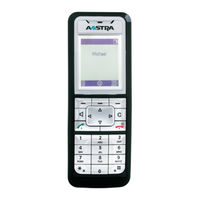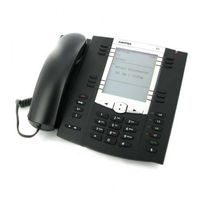User Manuals: Aastra 5000 VoIP Phone System
Manuals and User Guides for Aastra 5000 VoIP Phone System. We have 6 Aastra 5000 VoIP Phone System manuals available for free PDF download: Installation And Maintenance Manual, User Manual, Quick User Manual
Aastra 5000 Installation And Maintenance Manual (502 pages)
Aastra 5000 Server Installation and Maintenance Manual
Table of Contents
Advertisement
Advertisement
Aastra 5000 User Manual (69 pages)
Communications Systems; Terminal
Brand: Aastra
|
Category: Telephone System
|
Size: 7 MB
Table of Contents
Aastra 5000 User Manual (64 pages)
Communication Systems, Attendant console
Brand: Aastra
|
Category: Conference System
|
Size: 0 MB





